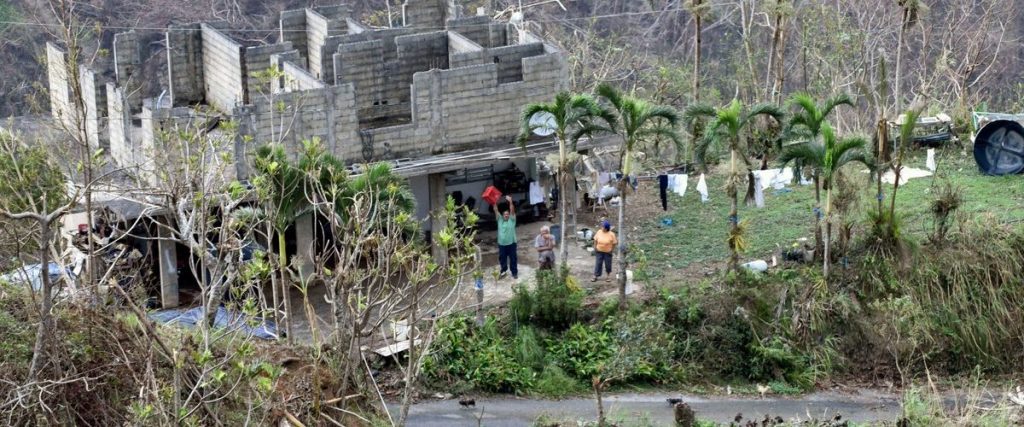Hurricane Maria made landfall on the southeast side of Puerto Rico on September 20th as a powerful category 4 hurricane with sustained winds of up to 155 miles per hour. The hurricane brought high winds, rain, and flash flooding, turning the island into a disaster zone. The National Weather Service called it the “worst hurricane in nearly 90 years” to hit the island.
Two weeks later, the U.S. territory is still wrapping its mind around how it’s going to recover from the storm.
Death toll related to Hurricane Maria in Puerto Rico has risen to 36, Gov. Rossello says.
— NBC Nightly News with Lester Holt (@NBCNightlyNews) October 6, 2017
Puerto Rico’s Aqueducts and Sewers Authority reports that running water has only been restored to 54% of their customers on October 5th. As of noon on the 5th, electrical service has been restored to 9.2% of customers on the island, including the San Juan airport and multiple hospitals, leaving around 1.4 million customers in the dark. The island’s power authority expects to have 10% of customers back online with power by October 7th.
[Informamos] Por ciento de clientes con servicios, por regiones #Metro #Norte #Sur #Este y #Oeste #PRSeLevanta #PR Strong pic.twitter.com/LOBhVx7xTO
— Comunicaciones AAA (@ACUEDUCTOSPR) October 5, 2017
As of October 4th, the Federal Emergency Management Agency reports that over 13,000 federal workers remain on the ground in Puerto Rico. All airports on the island are now open, although some have varying operations restrictions. Additional workers are throughout the U.S. Virgin Islands and elsewhere in the Caribbean.
Puerto Rico’s troubles not quick to go away
In a sign of the extended nature of the crisis on Puerto Rico, NBC News announced on Wednesday that the network would be opening a bureau in San Juan. The network has been covering Puerto Rico since Maria hit with several of their newscasters, as well as their Spanish-language network Telemundo.
JUST IN: @NBCNews is opening a news bureau in San Juan, #PuertoRico
Read more via @tvnewser: https://t.co/1Uv0MZafKU pic.twitter.com/gbzgb667IX
— NBC News PR (@NBCNewsPR) October 5, 2017
The news bureau will be open for business in San Juan “for the foreseeable future,” said NBC.
Time to rethink Puerto Rico’s power grid?
Governor Ricardo Rossello entertained an offer from Elon Musk to discuss the solar and battery offerings of Telsa, one of the companies he runs. In a Tweet reply on the topic, Musk noted that “The Tesla team has done this for many smaller islands around the world…so it can be done for Puerto Rico too.” Musk’s Tesla, which bought solar manufacturer Solar City in 2016, boasts that it can not only provide power generating capabilities, but also the resources needed to store that power.
In the aftermath of Hurricane Maria, officials reported “significant damage” to the power transmission and distribution system on the island. While the power generation stations might be up and operational, the cabling needed to get that power to offices and homes is in need of significant repair.
Let’s talk today; I will be in touch. I have no doubt #Teslasolar will work w/#PuertoRico to globally showcase the power of its technology. https://t.co/wJcm9fCNVV
— Ricardo Rossello (@ricardorossello) October 6, 2017
Musk is currently in the midst of a 100-day bet to install a 100-megawatt power system in Australia, or else “it is free.” Tesla signed the agreement with South Australia’s power distributor on September 29th, triggering the start of the 100-day storage deadline, although Musk claims that half the capacity of the 100MW system have already been installed. South Australia endured a series of blackouts during the summer of 2017, which led to Musk’s Tesla bet.
Musk expects a similar type of system could be installed in Puerto Rico to help rebuild the island’s power distribution system in a smarter way after the hurricane. It is too early to tell what kind of system Musk and Rossello might discuss or agree upon, and still further to say who would pay, and how much.

